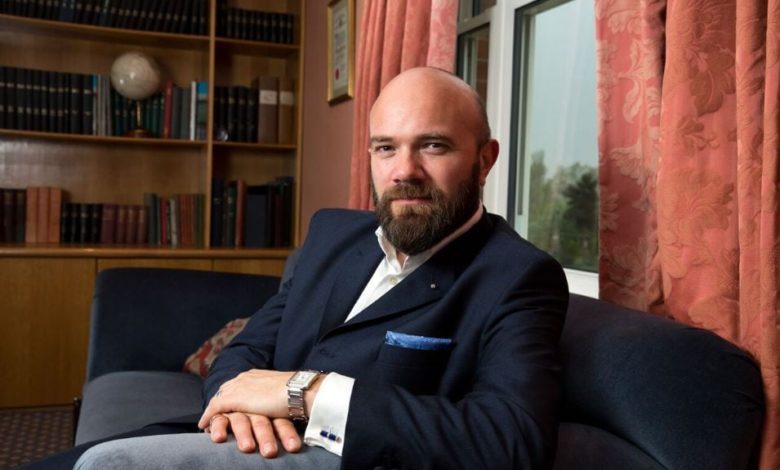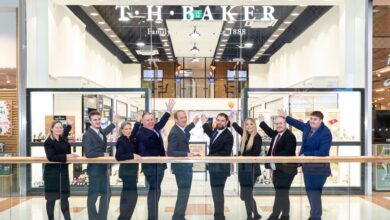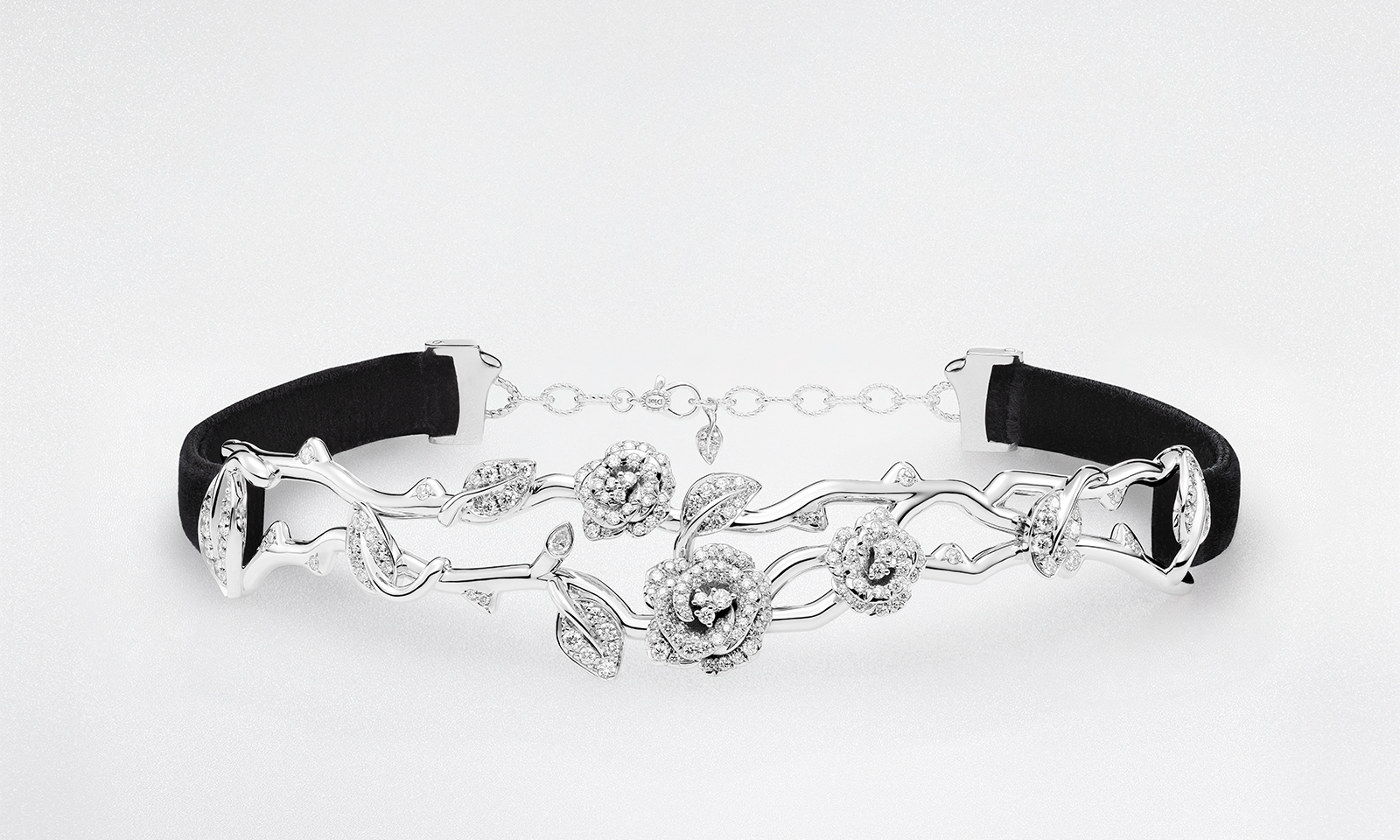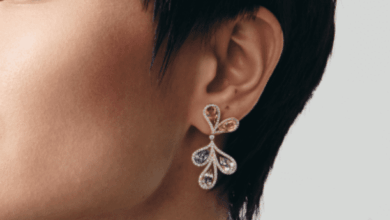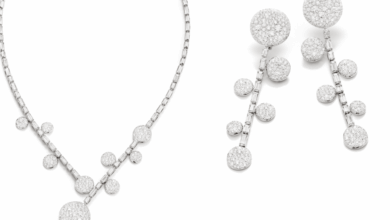Q&A SESSION: Simon Johnson, National Association of Jewellers
Register to get 1 free article
Reveal the article below by registering for our email newsletter.
Want unlimited access? View Plans
Already have an account? Sign in
The National Association of Jewellers recently announced that Simon Johnson, owner of Marmalade Fine Jewellery, has been named chairman. TOM DAVIS sat down with him to find out about the new role and what his plans are for the future of the UK’s newly merged trade body.
For the benefit of our readers could you tell us a little about yourself and how you got into the industry?
I’ve been in the business since I was about 10 years old. My parents used to own fashion jewellery stores and they had a small chain of four shops. We were importing and selling silver jewellery from around the world, including Thailand, Mexico and Turkey. I was doing that in the store and from a very early age and when my mum retired around 15 years ago my wife and I bought this current shop that we’ve got off of her. We thought we’d move into the fine jewellery side of the business, so I retrained and did a bit of design training and I learned more about the precious side of the business.
How did the chairmanship for the NAJ come about?
Gradually. I have been actively involved with the association as long as I can remember really, as a fine jeweller. At some point someone asked me if I wanted to go along to one of the old council meetings and we had a chat and he said ‘if you like that then maybe you should come along here’ – so I gradually just got hooked in, in a very nice way. At some point Pravin Pattni said that they were looking for someone to help on the membership committee. I sat down with them and had a chat. After a few meetings I joined the board and then last year they asked me to be vice-chairman. It’s been a nice natural and relaxed progression actually. I’ve always been very friendly with a lot of the people on the board of the old NAG and it just seemed like a good way to spend some time all doing something we had a lot of time and respect for.
You’ve had experience in both retail and creating your own jewellery, how will that help you in the role?
I think, more importantly, it’s about seeing the industry from across the board. We work closely with manufacturers, we do a lot of bespoke work at Marmalade, myself and all my team spend a lot of time with clients designing and working through the bespoke problems and trying to work out solutions, so we are aware of the limitations of where we are in that regard and also what’s available in terms of support for manufacturers and designers. I’ve got experience of wholesaling, so we have a good breadth of experience across the board and we know about a lot of the problems that a lot of businesses face at some level.
Will you take a step back from Marmalade Fine Jewellery?
I’m in a really fortunate position. We’ve currently got the best team I’ve ever worked with here, with four full-time members of staff. We have two girls who have been working here around seven and eight years now, one of whom has just graduated from the Institute of Registered Valuers and another who is about to graduate, so I will have two gemmologist valuers on site. Another person on the team is training to be a CADsmith and they have been here two years. There’s a huge amount of skills in the team and they have been with me long enough to know how to run the store the way I like it. I always work with my wife so we have that basis as well. The chairmanship will take, and is taking a lot of time, but I’m confident that I can run both and get the right results for both at the same time.
What’s your first priority in the new role?
The first priority is to try and get everything lined up. We need to get all the groups set up and we need to get all the focus and objectives lined up. We’ve got a broad membership, and we need to work out how to make sure everyone in that membership understands the value and appreciates the benefit of being a member.
Our membership includes designer makers, valuers, independent retailers, multiple retailers, manufacturers, mass-market manufacturers and importers. We need to sit down and work out how to communicate our appropriate values to the relevant member groups. We are working through that with our membership group, we are working with membership standards and our code of conduct.
We are just in the process of writing a customer charter in order to benefit the members in regards to the public-facing side of the business. We are currently working on what we are calling a ‘retailer toolkit’, which is essentially a collection of leaflets from the NAJ member to the public explaining the benefits of using a valuer, buying a diamond or buying a wedding ring – all those things that add value from a member point of view.
We are redesigning the IJL stand, we are working with our partners on our partner programmes.There’s no one thing, there are hundreds. As a pet project I’m writing some member surveys, segmenting our members into the various groups they are, including; full member; valuer member; student member; and retail member. I want to find out what they think about the association. We want to listen to our members and find out if we are hitting the right note.
For the retailers reading this who aren’t a member of the association, how would joining the NAJ benefit them?
Better together and together we are stronger. The most important role is to get across to the buying public why buying from an NAJ member is better than buying from a non-NAJ member. We offer the customer charter, the retailer toolkit, we are launching the ‘Made in Britain’ mark, we are representing the retailers at a governmental level, and we provide access to education. Some retailers won’t find any direct benefit but actually their membership fees all go into the pot to fund the schemes that benefit the designer-makers, the smaller jeweller and the start ups. There are a lot of reasons to want to be part of the NAJ, every single person will find one thing about the association that they appreciate the most.
We have a compliance officer that deals with customer disputes, we’ve got an arbitration panel so if there’s any issue with a client we can sort that out for them, we offer a free legal helpline – there are literally so many member benefits for joining up.
Those who get engaged can join the new business network we’ve created which is about networking with other retailers, which adds value to your business and membership. I’ve personally been a member of the network since it started as EDF six years ago and every time I go for a meeting it pays my membership fee, because someone will come up with an idea, a suggestion or a route to solving a problem that I just wouldn’t have come up with myself.
Why wouldn’t you be a member of the NAJ? We have 2,200 members, all of whom are either retailers, manufacturers, designers and suppliers. I’d like to see every single retailer in the country as a member of the association because strength and support are the foundations that make the industry.
The NAJ is looking to launch a ‘Made in Britain’ mark, could you tell us a little about that and the progress you’ve made so far?
It’s progressing well. It’s a work in progress and the concept is that once we have written the set of parameters that defines what is a ‘Made in Britain’ piece, the individual maker will ask their assay office to apply a unique mark that we will design and have registered to us. The mark will explain and define the jewellery to their customer as a uniquely Made in Britain piece. The relative cost for doing that we are going to try to keep as low as possible, while the relative penalties for being nefarious about it will be high. We are trying to promote the membership of the NAJ, from designer-makers to bespoke jewellers, to proudly say their jewellery is made in Britain. I think that is only going to add credence to the individual makers.
Where do you see the NAJ in say, five years time?
In five years time I see the NAJ as the default de facto standard, I want people in the jewellery industry to ask ‘why aren’t you a member of the NAJ, look what they can do for you’. We have a membership figure now that by the end of my tenure I want to be significantly higher.
I want to be providing a lot more educational courses than we currently do. We provide more than a 1,000 courses a year, but I think we need to do more and it would be great to do 2,000 or 3,000 courses a year to all parts of trade. It’s a little bit too early to pin me down on specific figures. I know where we are now, I know where we started at and I’ve got a couple of numbers in my head, but I think we need to get some plans and communications in place.


